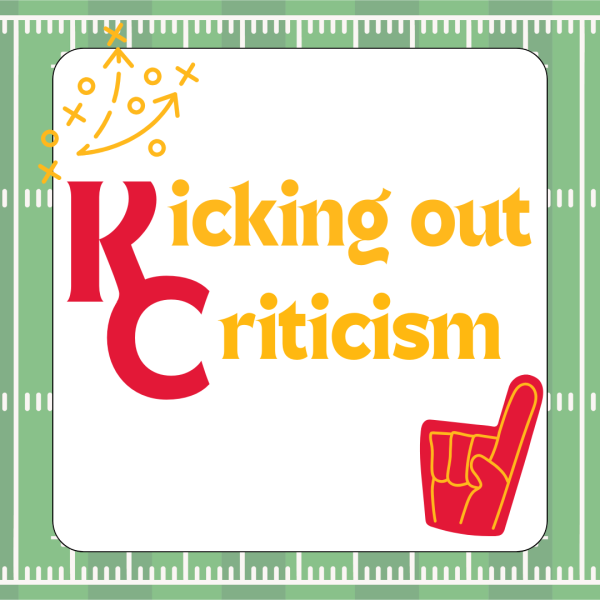Rape culture should be replaced with proper education
Throughout the majority of people’s lives, they are taught and conditioned to different aspects in life that contribute to rape culture, whether they realize it or not. As defined by oxforddictionaries.com, rape culture is a society/environment whose prevailing social attitudes have the effect of normalizing or trivializing sexual assault and abuse.
With things like dress codes, catcalling and teaching girls to “not get raped,” rape culture is prevalent in all aspects of life. Senior Claire Boomer said she is very aware of the stigmas related to the topic.
“Rape is something that ruins people,” Boomer said. “It’s something that’s hard to recover from. We don’t take sexual assault, in general, seriously enough.”
There are some who think that rape has minor repercussions when compared to other types of reported crime. However, according to rainn.org, an anti-sexual violence organization, 94 percent of women report some form of post traumatic stress disorder in the two weeks following the rape, with 33 percent of women reporting contemplating suicide after their rape, making it something “hard to recover from,” according to Boomer.
Though things like catcalling and rape don’t seem connected from a distance, they end up going hand in hand. Both are a form of street harassment, though with drastically varying aftereffects.
Most people, especially girls, have been catcalled or have experienced some form of street harassment at some point in their lives. According to stopstreetharrasement.org, 99 percent of interviewed women reported that they were harassed at least once in their lives. These forms of harassment include leering, whistling, sexist comments, vulgar gestures, following or even blocking paths. However, minor forms of street harassment, like catcalling, go relatively unnoticed to many.
Recently, actress Alyssa Milano tweeted a picture of writing that said “If all the women who have been sexually harassed or assaulted wrote ‘Me too’ as a status, we might give people a sense of the magnitude of the problem.” This got thousands of responses, ranging from the simple “Me too” to personal experiences of other victims. The sheer amount of response to the hashtag was eyeopening, and allowed many to see how many were actually affected.
One of the reasons this caught some people off guard is due to the normalization of sexual harassment, like catcalling, in our society. Freshman Mira Hentschel said catcalling is so normalized because we “just let it happen”, while junior Connor Price argues that it is because of the media.
“You see it so often in the media and movies and stuff like that,” Price said. “It causes it to seem like less of a big deal than it actually is. It makes it seem more common; it makes it seem less offensive.”
According to telegraph.co.uk, 84 percent of the interviewed women said that they were under the age of 17 when they were first catcalled. The most common age range happened between ages 11 and 17.
“The earliest time I can remember [being catcalled] was when I was 11,” Boomer said. “My mom and I were walking down the street, and I don’t think she realized it either, because it wasn’t very aggressive, but he was like ‘How are you pretty ladies doing?’ and my mom held me a little closer and we walked quickly to our car.”
Throughout the majority of girls’ lives, they are told that they should view the sexualization of their bodies as a good thing. During the spring of the 2016-2017 school year, a collection of people made the Southwest Brackets, where people would vote on which girl out of a select 64 was the most attractive. This gross oversexualization of girls ended up creating problems between friends and people in different grade levels, and was ultimately shut down before it got too out of hand.
These school situations are not just limited to things like brackets. Many people argue that things like dress codes add into rape culture. Girls are told not to dress in a way that is seen as “provocative,” similarly to how they are told not show too much skin when going out in public. This adds to the notion that only those who dress promiscuously are the ones who get raped. A girl wearing a short skirt isn’t going to be raped because she’s wearing a skirt, she’s going to be raped because of a rapist.
“Girls should be allowed to dress how they want,” Boomer said. “The way that we express ourselves through clothing shouldn’t affect the environment at all.”
Hentschel said dress codes “don’t really have anything to do with it.”
“I think it has to do with how well, or poorly, we teach everybody on how to not oversexualize,” Hentschel said. “We shouldn’t teach how to cover up.”
Dress codes also play into the notion that “boys will be boys.” Girls are told to put up with harassment and being treated as objects because boys can’t control themselves, and this is something that girls often deal with for their entire lives. Girls are constantly taught how to avoid getting raped, instead of others being told not to rape.
“We should not have to teach girls to hold their keys in their fists and have pepper spray on their keychains,” Boomer said. “We should teach people not to rape.”
Frequently, when a girl comes out and says that she was sexually assaulted or abused, she is the one that is blamed, or even shamed, for it. With questions like ‘What were you wearing?’ and ‘How were you acting?’ being the first things that people ask, it’s no wonder that only 30 percent of rapes are reported, according to nsopw.gov, a site that provides information about sex offenders to the public.
“Even if the woman does come forward, she is shamed and blamed for it,” Boomer said. “Why is it always our fault for something we have no control over?”
However, it’s not just girls that have to deal with sexual assault and abuse. With one out of every 10 victims of rape being male, according to rainn.org, the problem is much bigger than many think it is. A large portion of society is under the impression that only “weak” men get raped, or that men don’t get raped at all. The whole idea that a woman being raped by a man is the only situation possible in a sexual assault case is absurd; men can be raped by men, men can be raped by women, and women can be raped by women.
“Men have this idea of hyper-masculinity,” Boomer said. “They rarely, if ever, come out and say if they were raped by either a man or a woman. Society has this idea that they’re so strong and nothing like that could ever happen to them.”
Rape culture is something that is present in almost every aspect of a person’s life. Between the tolerance of sexual assault, street harassment and victim blaming, there doesn’t seem to be an escape from all of these different factors. Rather than condoning these sorts of behavior, people should focus more on teaching people to not rape and to not blame the victims of these horrible crimes.







